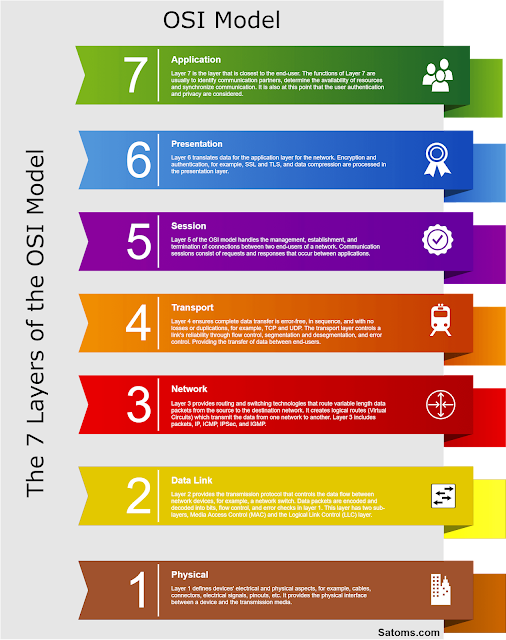7 Layers of the OSI Model
What is the OSI Model?
In telecommunications and IT networks, you will often hear people talking about the OSI model’s different layers. For example, a network engineer might refer to a router or switch as a Layer 3 device or a network technician talking about Layer 1 faults.
The Open System Interconnection (OSI) model, created by ISO (International Standards Organisation), provides a standard framework and interoperability for IT networks and communication systems.
Layers 1 to 4 are used to transfer data around a network, and 5 to 7 contain application-level data that the user interacts with at Layer 7. Each layer performs specific tasks before passing the flow of data to the adjacent Layers in the model.
OSI Layers
- Layer 1 defines devices’ electrical and physical aspects, for example, cables, connectors, electrical signals, pinouts, etc. It provides the physical interface between a device and the transmission media.
- Layer 2 – The data link layer provides the transmission protocol that controls the data flow between network devices, for example, a network switch. Data packets are encoded and decoded into bits, flow control, and error checks in layer 1. This layer has two sub-layers, Media Access Control (MAC) and the Logical Link Control (LLC) layer.
- Layer 3 provides routing and switching technologies that route variable length data packets from the source to the destination network. It creates logical routes (Virtual Circuits) which transmit the data from one network to another. Layer 3 includes packets, IP, ICMP, IPSec, and IGMP.
- Layer 4 ensures complete data transfer is error-free, in sequence, and with no losses or duplications, for example, TCP and UDP. The transport layer controls a link’s reliability through flow control, segmentation and desegmentation, and error control. Providing the transfer of data between end-users.
- Layer 5 of the OSI model handles the management, establishment, and termination of connections between two end-users of a network. Communication sessions consist of requests and responses that occur between applications.
- Layer 6 translates data for the application layer for the network. Encryption and authentication, for example, SSL and TLS, and data compression are processed in the presentation layer.
- Layer 7 is the layer that handles the end-user direct interaction with the application, for example, SSH, HTTP, and DNS. Resource evaluation, synchronization, and communication are functions of the application layer.

Comments
Post a Comment